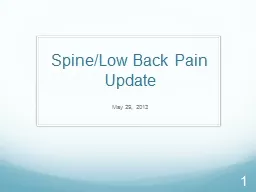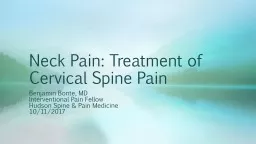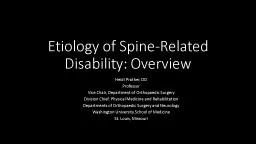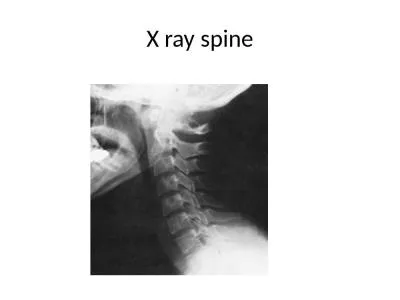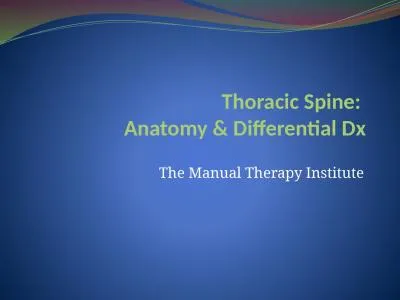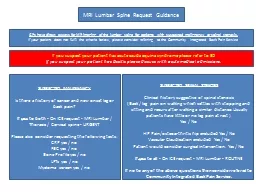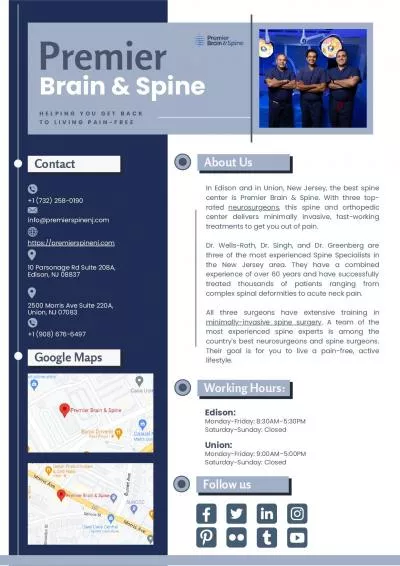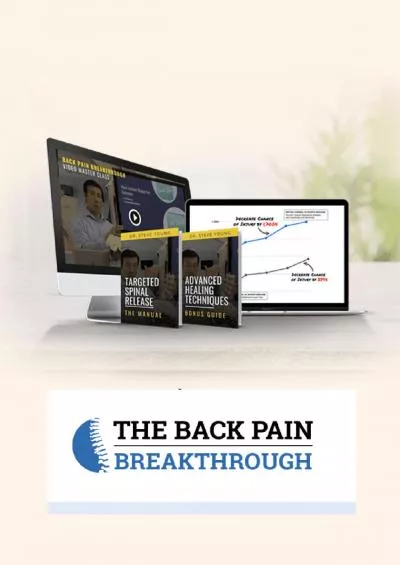PPT-Spine/Low Back Pain
Author : giovanna-bartolotta | Published Date : 2015-09-21
Update May 29 2013 1 Goals for Todays Presentation Provide update on Spine SCOAP proposal Summarize the progress made by the SpineLow Back Pain workgroup Get feedback
Presentation Embed Code
Download Presentation
Download Presentation The PPT/PDF document "Spine/Low Back Pain" is the property of its rightful owner. Permission is granted to download and print the materials on this website for personal, non-commercial use only, and to display it on your personal computer provided you do not modify the materials and that you retain all copyright notices contained in the materials. By downloading content from our website, you accept the terms of this agreement.
Spine/Low Back Pain: Transcript
Download Rules Of Document
"Spine/Low Back Pain"The content belongs to its owner. You may download and print it for personal use, without modification, and keep all copyright notices. By downloading, you agree to these terms.
Related Documents

